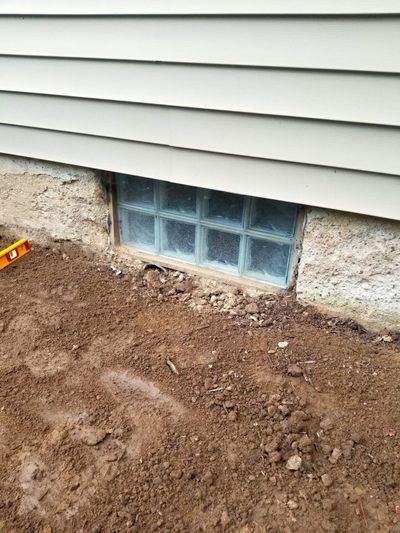Ask the Builder: DIY fix for crumbling concrete foundation

Q: Hey, Tim. I watched your three-part video series on patching a concrete foundation on your website. It’s exactly what I needed to help me repair the cosmetic crumbling of my concrete. I have questions.
Will that method work to also patch defects in steps and flat concrete sidewalks and driveways? I have a 4-inch diameter hole in the foundation that needs to be filled. What’s the best way to do this? Do I just pack in some of that cement stucco you show how to mix up? Do you have any other tips to share? –Casey S., Antigo, Wis.
A: I would love to have a nickel for every person who needs to patch concrete. Oh my, that would be so many nickels. I’ll discuss below how to achieve professional results with little work and cost.
I recorded the three videos that Casey mentioned about six years ago. It was pouring rain, but we had to shoot that day. Fortunately, I was under a covered porch and could demonstrate exactly what to do.
The first step in a concrete repair is to remove any loose concrete and get rid of all dust. You can use a chisel and a hammer. If you have lots to do, you can rent a rotary-hammer tool with a chisel tip. These power tools can do a remarkable amount of work in a short time. I like to use a garden hose and scrub brush to clean away all dust and loose particles of sand.
The next step I would have never known about had it not been for a generous old concrete craftsman who shared his trade secrets with me 45 years ago. This mason saw me trying to do a small repair job and stopped to talk to me. He could tell I was about to make a mistake.
He explained why most concrete patches fail. There are many factors that lead to failure, but the biggest one is a lack of bonding between the old concrete and the new material. This gentleman shared tales about him being a young apprentice. It was fascinating.
He was born and raised in Cincinnati, as was I. When he was in his 20s, just about every new house built had concrete steps with a stunning sandy texture. The steps were actually stuccoed. You rarely see this technique today because it’s an extra step in the process.
This expert craftsman said they’d never pour a set of steps on a Friday because they wanted to apply the stucco no later than 18 hours after pouring the steps. In hot weather, they’d often pour the steps in the morning and apply the stucco in the afternoon for optimal results.
The stucco mix was just a blend of hydrated lime, Portland cement and medium sand. He said they used 1.5 parts Portland cement, 0.5 parts hydrated lime and 4 parts sand. Blend all this together dry and then add enough clean water to make a mix that resembles applesauce.
But the true secret to getting the stucco – or, in your case, the patching material – to bond to the old concrete is to apply cement paint just before you apply the patching material. Cement paint is just a mixture of Portland cement and clean water. You blend enough cement with the water to make it the consistency of latex paint.
Just before brushing on the cement paint to the old concrete, this master craftsman said to get the old concrete damp. You can use a sponge, brush or an old spray bottle. Note: You want it damp, not soaking wet.
You then brush on the cement paint and immediately cover it with your stucco mix. Never allow the cement paint to dry. It must be covered immediately. You’ll discover you’ll not have to rush if you work in the shade or on an overcast day. Working in the direct sun on a hot day is too difficult on the materials and you.
Patching larger holes is easy. You use the same process, but find rubble or small pieces of stone, brick or concrete to help pack the hole. Don’t try to fill large holes with just the stucco mixture. You want the rubble to be covered with the stucco mix, so use rubber gloves if you want to do this by hand. Do what’s necessary so the hole has no voids in it. It needs to be completely filled with the rubble and the stucco patching material.
The old mason left me with one other important tip. He said the patching material or stucco must be covered with burlap and kept wet for 48 hours. Back in his day, that’s all they had to slow down evaporation. You can use 4- or 6-mil plastic sheets, but be sure you weigh it down so it doesn’t blow away and so the wind can’t get under the plastic.
The plastic allows the patching material to get much harder and create a bond with the old concrete that will last for many decades. I’ve driven by concrete I patched in the mid-1970s using this method in the past year, and it still looks perfect.
Subscribe to Tim Carter’s free newsletter and listen to his new podcasts at askthebuilder.com.